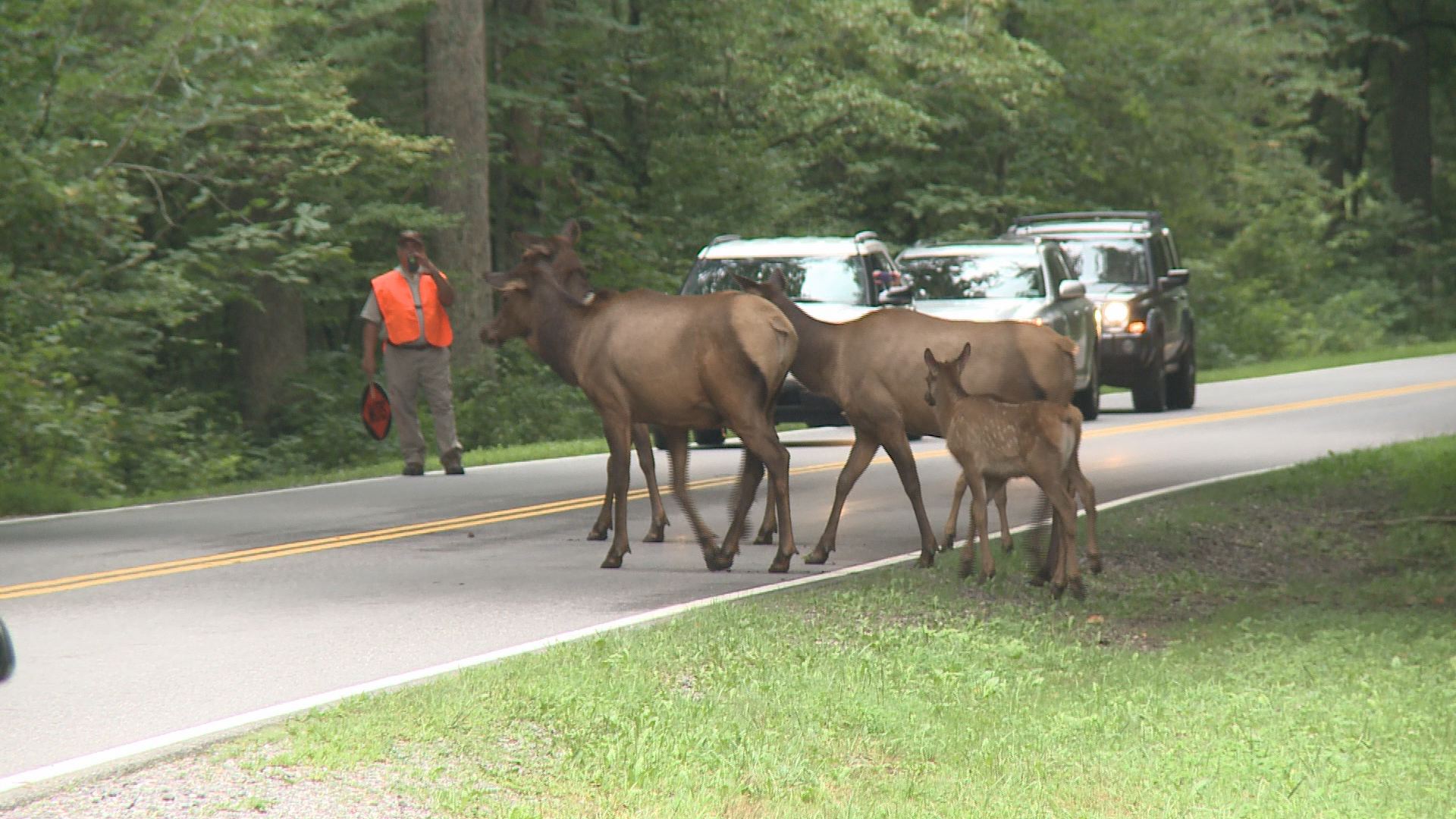(WBIR) Elk in the Great Smoky Mountains National Park are especially active this time of year, and park officials say it's a great time to visit.
With that invitation, however, comes a warning.
Now marks the start of elk mating season, which is also called "the rut." That means the bulls - or mature male elk - will grow consistently more aggressive as they near the peak of the rut, which falls in late September and early October.
As long as visitors follow park rules, GSMNP wildlife biologist Joe Yarkovich said, there's no reason they can't have a safe elk-viewing experience.
Yarkovich helps oversee elk management in the park. He said the best place to see elk is on the North Carolina side of the park, in the Cataloochee Valley and Oconaluftee area.
This time of year, bulls claim dominance over a herd of females and their young, as the peak of mating season approaches.
"The bulls get really agitated and spend a lot of time herding up the females," Yarkovich said. "Of course, that brings them into the open meadows, which are near the roadways, so we end up with a lot of traffic and visitor management issues as well."
Sometimes elk will wander into "human spaces," Yarkovich said, which include the Oconaluftee Visitor Center parking lot.
That's when park officials use something called aversive conditioning on the elk, employing techniques that link humans to bad experiences. Those range from clapping and making loud noises to something a little more surprising.
"We may end up using something like a paintball gun on the animal," Yarkovich said, holding a black paintball gun in his hands. "It's a good, non-lethal way just to get an animal to back up or to get a little more space to move it out of an area where we would consider that animal being unacceptable."
The fish oil-based clear paint pellets are non-toxic and only meant to scare the animals.
If an animal grows too comfortable around people, it can lead to injuries for people - and for the animal.
Many will remember a viral video from two years ago, in which a young male elk, known as a spike bull, had grown too accustomed to interaction with humans and started lightly sparring with a photographer, who was sitting on the side of the road.
The man was all right, but the park had to euthanize the animal.
SEE THAT SPARRING VIDEO: Smokies officials respond to concerns over euthanized elk
"The best way to keep wild, natural behavior in an animal is by instilling the fear of people into that animal," Yarkovich said. "When elk get so accustomed to seeing people, they kind of lose that natural fear."
It is illegal all year round to approach within 50 yards of any elk or bear.
During September and October, visitors are prohibited from entering the fields where elk are grazing, though people are welcome to watch from the side of the road. Yarkovich recommends visitors stay near their cars, in case a bull decides to charge.
"I would advise all visitors to bring a zoom lens on their camera," he said. "The biggest issue we see are people trying to get too close to get a better picture, and that leads to an obvious safety issue. Anything that that bull sees as a threat he could challenge and he could charge."
Those bulls will have plenty of targets, too.
Karen and John Stockton volunteer as elk spotters and crowd controllers in the Oconaluftee area of the park.
"It gets pretty exciting around here sometimes," Karen Stockton said. "It's not unheard of to see 50 to 80 cars parked on both sides of the road, yes, because rut season will be in full bloom, you know, probably by September, and the alpha male is chasing away the junior males and going after the females."
Hunting wiped out the area's elk population in the late 1700s, but a reintroduction program launched in 2001 has been successful. Elk numbers are now up to about 140, about 90 to 100 of which live within park boundaries.
"We quickly found out after several years that elk are pretty adaptable, and they learned really well how to survive in the Smokies, how to take care of themselves, and from there the herd has continued to grow," Yarkovich said.
He said the best times to spot the elk are right at dawn and within the three hours before sunset.
For information on elk in the park, click HERE.


